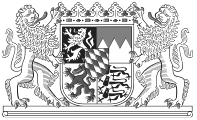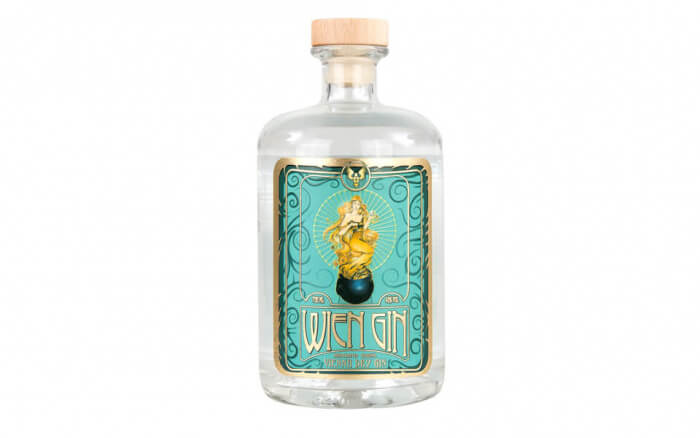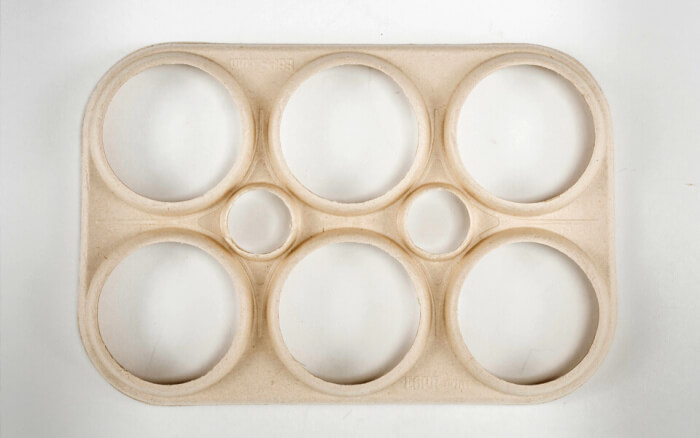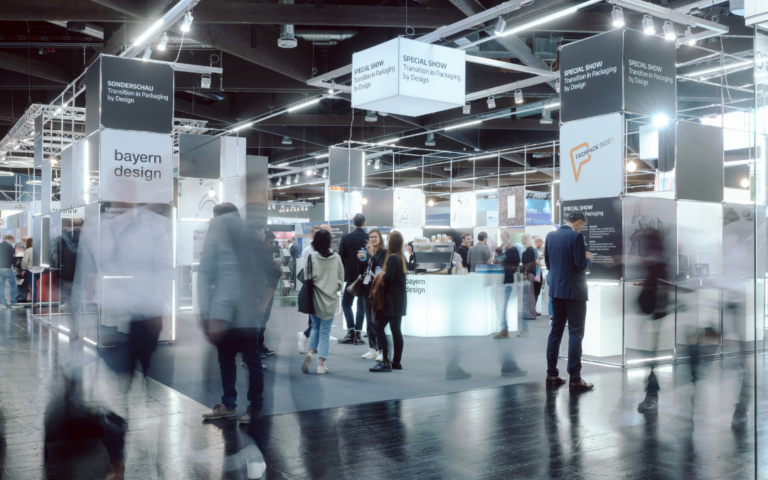Time to rethink
Design Edition BrauBeviale 2020
At the BrauBeviale 2020 trade fair, bayern design will host a special, entirely digital show titled time to rethink – Design Edition. Small-batch series will be the theme of the showcase and of the videos of interviews with selected designers and experts. This manufacturing method can play an important role in unlocking new business opportunities.
In addition, the products and interviews will demonstrate that whether change is radical or moderate, every end-to-end design process contributes to strengthening the company’s products, employees, and image. Small-batch series can help test and assess a product’s success and acceptance.
To complement the exhibits and models on display, bayern design and NürnbergMesse will present videoed interviews to introduce the producers and their perspectives.
The designers, entrepreneurs, and experts in the fields of digitization, marketing, product development, and sustainability who were interviewed will highlight and discuss one exhibit each and will explain the motivation and share background details. The aim is to illustrate the new paths that small-batch series and the development of new products and communication channels have allowed them to take in large, medium-sized, and small companies. The exhibits will be presented in three themed categories: Digitization, Storytelling, and Innovation.
bayern design’s series of lectures for the BrauBeviale Center Stage will round out the digital time to rethink – Design Edition exhibition with discussions about new fields of action concerning the disciplines of life-centered design, brand design, and materials innovations. Lena Jüngst of air up, Lukas Dudek of taste!, and Aart van Bezooijen of Material Stories will share their expertise and offer insights into their work on design-oriented innovation.
Digitization
Digitization transforms communication and creates new social phenomena. Designers use it to tap into new ways to devise products and develop brands. Digitization expands physicality by including a new dimension – interaction. The following exhibits are examples of the diverse paths taken.
Kilchoman Machir Bay and Sanaig NFC / QR Code Enabled Labels
From a technological perspective, transferring data from a bottle label to a smartphone is eminently feasible, as can be seen in a number of the special show’s exhibits. Peter Wills of whiskey distillery Kilchoman Scotland relies on Near Field Communication (NFC) to provide whiskey aficionados with complementary information and offerings regarding the company’s spirits and the brand.
La Pettegola Limited Edition
Solutions created with augmented reality are even more spectacular: They bring bottle labels to life in a playful manner and establish a new level of communication between the brand and its customers. Nicola Pavesi and his team at Publifarmtranslated their experiences in other areas to their collaboration with the La Pettegola wine label.
Wien Gin
With the augmented reality app they created for their Wien Gin in honor of their hometown, Kesselbrüder of Vienna, Austria, have let the genie out of the Art Nouveau-designed bottle. Developed by Florian Koller in cooperation with design students, the app allows users to play a game in which they can prepare drinks featuring Wien Gin.
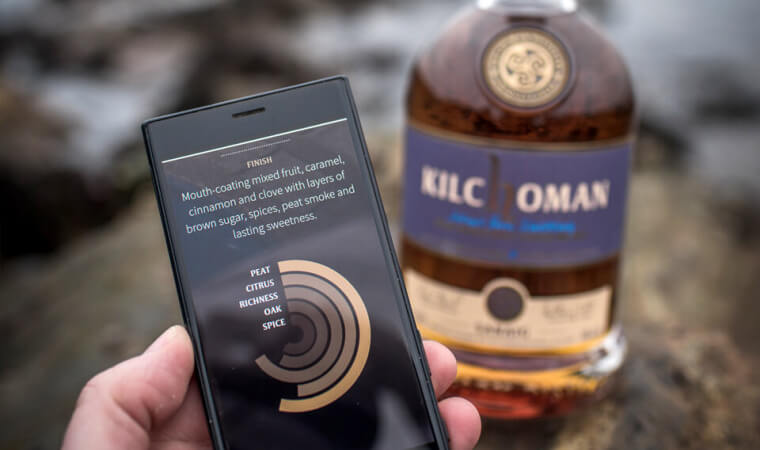
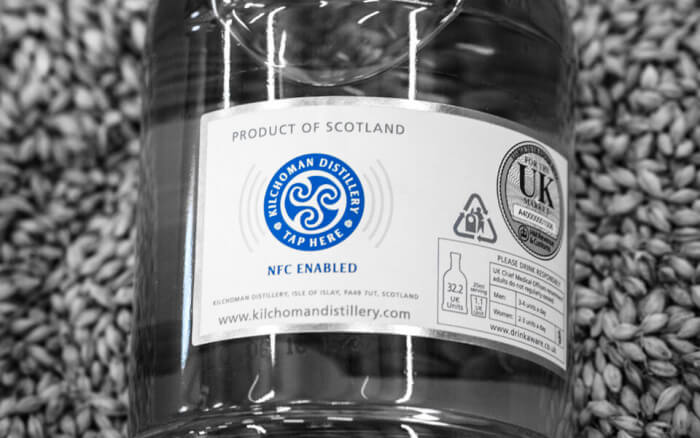
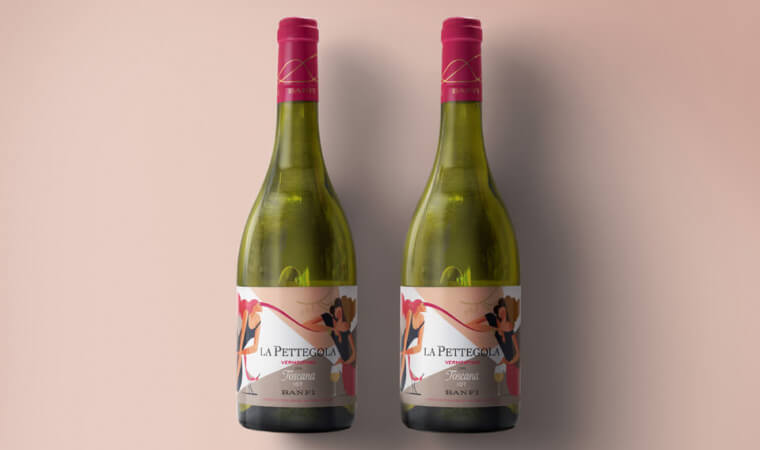
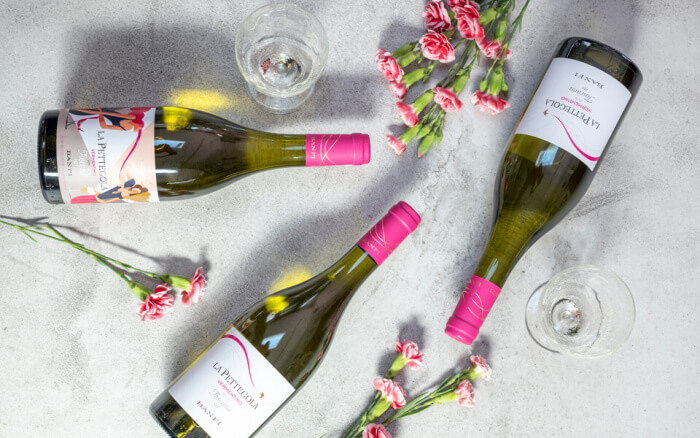
Innovation
Many designers and companies are looking for new, sustainable materials to create products and brands focusing on use and the environment. Small-batch series can be testing grounds or preparation for expansion into serial production. The products portrayed below are exemplary of the great potential of small-batch series.
Bénazet
The vodka bottle Mark Braun created for Bénazet of Baden-Baden shows that an individualized bottle can be a brand’s iconic USP. The bottle’s form language elegantly reflects the production process of the vodka and offers details of local architecture.
Bozal Mezcal
Kevin Roberson and his team at Swig Studio of California not only ventured into designing a new bottle, they completely recreated the brand’s presence and introduced a new material: Bozal Mezcal’s notable ceramic bottle is a reinterpretation of traditional vessels and production methods.
BOTTLE BOX
Inspired by the reduced form language of the Ulmer Hocker stool, Christoph Böninger of Auerberg developed and created the versatile BOTTLE BOX from the premium-quality wood of oak and spruce trees. The BOTTLE BOX has been incorporated into the collection of Die Neue Sammlung – The Design Museum in Munich.
Inuru
Light is the new dark. Marco Graeber of the Berlin-based start-up INURU presents new applications for OLED technology and prints light elements onto labels. His packaging and labels can be activated in a variety of ways. The entire technology is housed in the slim label.
LARQ
With his cutting-edge drinking bottle which self-cleans using UV rays, Justin Wang of LARQ of California introduces new applications for technology for a healthy, sustainable lifestyle.
Letterbox Wine
As inventors of Letterbox Wine, Santiago Navarro and his team at Garçon Wines see themselves as radical disruptors of the wine market. Made of recycled PET, from the front the new bottle looks like any other bottle but viewed from the side it is obvious the bottle is flat. This allows it to fit through an average British letterbox for more convenient distribution, particularly for online suppliers.
up2u / MuC – My useful Cup
With his team at up2u in Nuremberg, Martin Gruber developed a whole set of to-go products including MuC – my useful cup, which can be flattened for enhanced convenience and to take up less space.
Udo Duo
Product designer Carina Frings of Udo Duo in Cologne eliminated production of a cup entirely: Her flexible reusable lid can be affixed to a variety of cups and turns them into to-go containers.
E6PR Biodegradable Can Carriers
Jorge Reynoso of E6PR of Mexico City has taken design a step further: His sixpack can-holder is made of biodegradable and edible material and thus contributes to a clean environment.
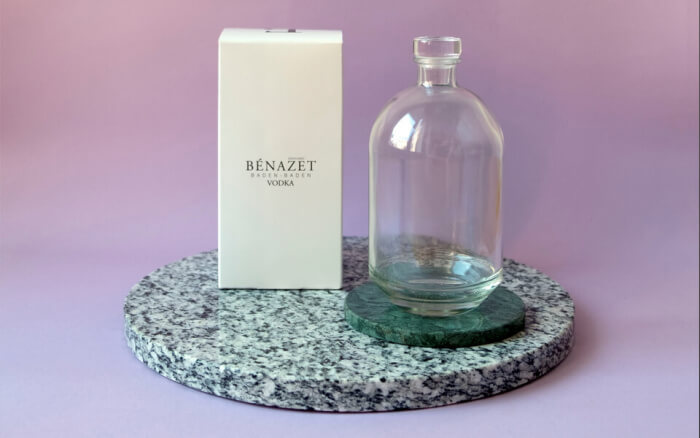
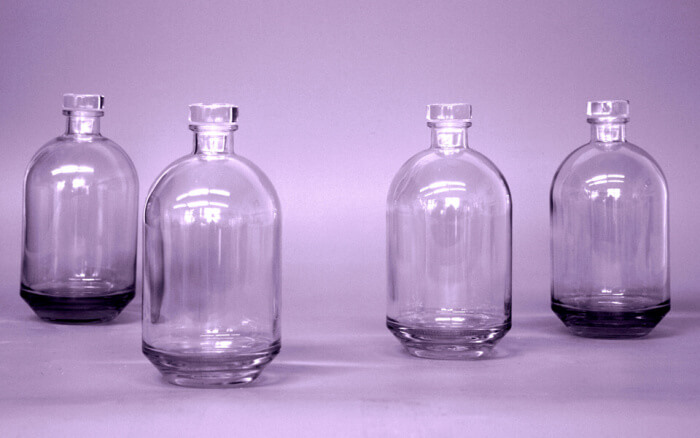
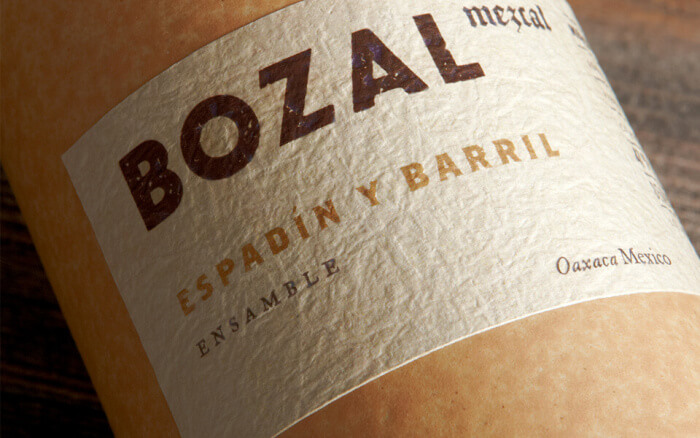
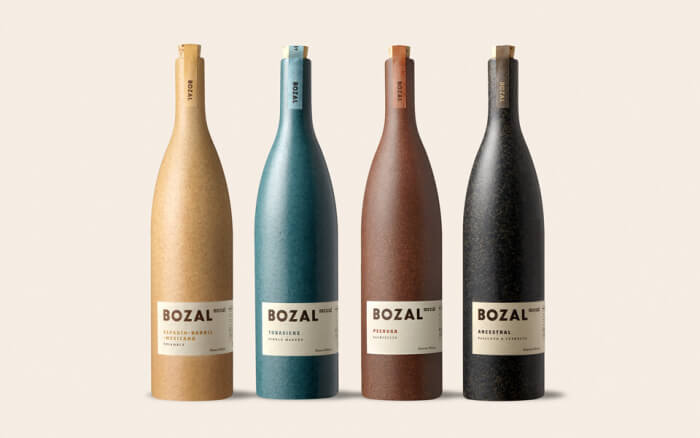
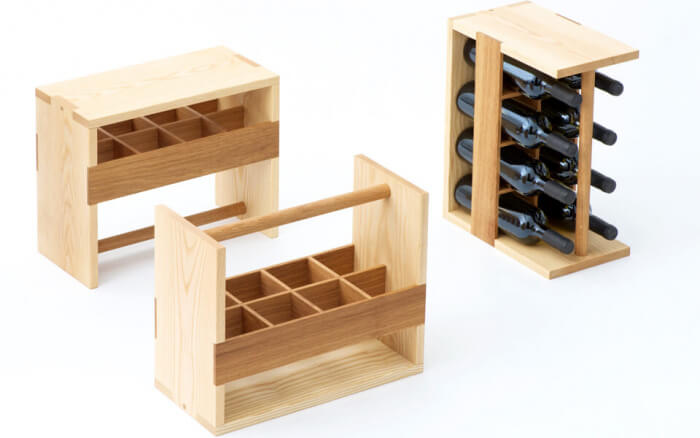
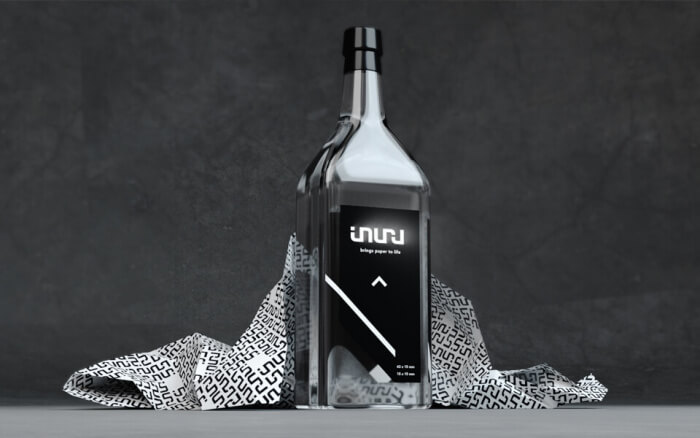

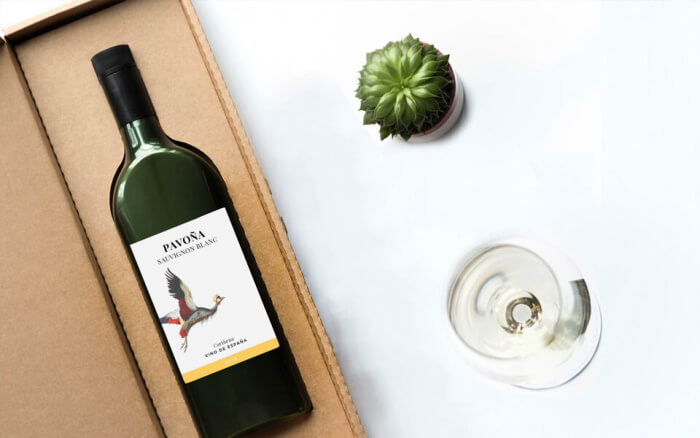
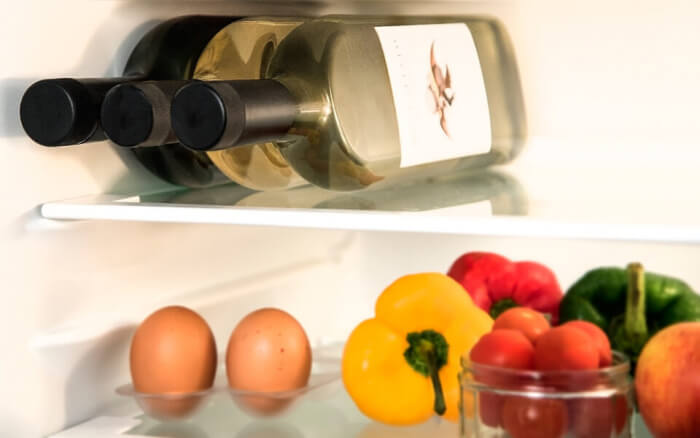
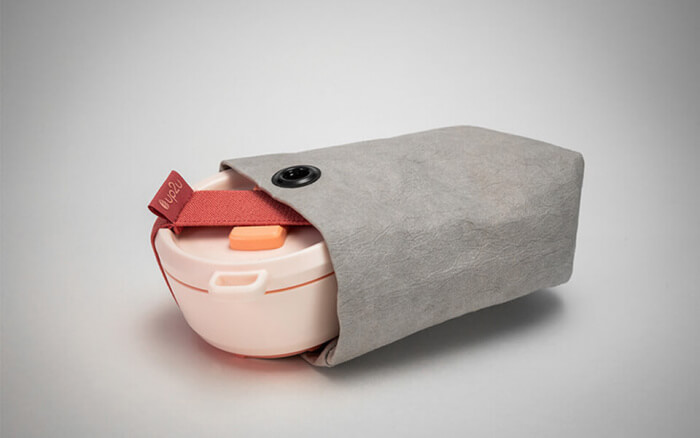
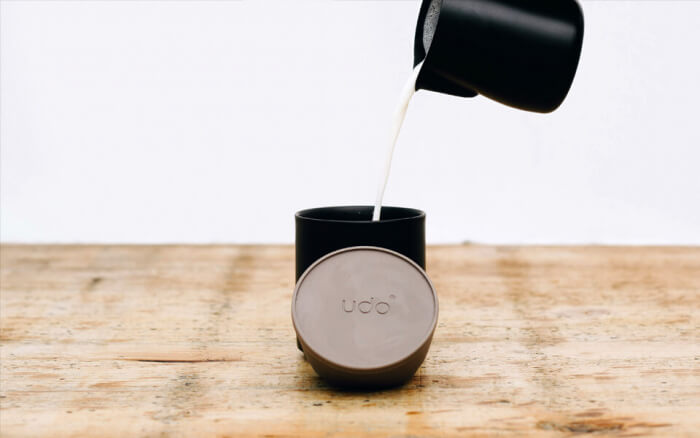
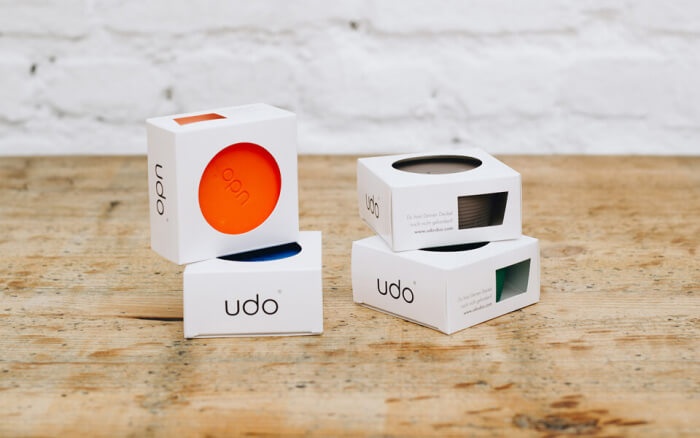
Storytelling
Strategic design leverages various narratives and integrates design elements into clear corporate identities. Small-batch series make it possible to go a step further. The following examples show that bold and exceptional storytelling helps large and small companies stand out.
#selfiebud
Julie Rutigliano and Fernando Passos of the New York-based agency Jones Knowles Ritchie showed flawless sensitivity to social phenomena: For their #selfiebud campaign they simply mirrored Budweiser bottle labels to enhance their readability on smartphone selfies posted on social media. The campaign for this analog yet ingenious intervention went viral and resulted in a D&AD Wood Pencil for the team, one of the advertising industry’s most prestigious awards.
Cántir 2020
Càntir 2020 is Spanish industrial designer André Ricard’s edition for the Museu del càntir in Argentona this year. Ricard demonstrates an impressive way to redesign a century-old object for everyday use. Made of environmentally friendly and sustainable materials including red clay and green glazing, the 2.5‑liter pitcher can be used for drinking or for serving beverages at home. Natural transpiration helps cool the content.
Twenty Stories
The outstandingly illustrative 20 Stories campaign by Caparo Studio of Greece honors the 20th anniversary of Lidl Hellas by telling 20 different stories on wine bottle labels. The project was awarded the D&AD Wood Pencil 2020, one of the advertising industry’s most prestigious awards.
M!LCH
Lisa Reimann of LESS Studio, Silke Philipps-Deters of Designforum Rheinland-Pfalz, and 13 other women demonstrated social responsibility by using a deliberately surprising approach to launch a white-wine cuvée originating in Germany’s Rhineland region. The proceeds from the sale of Trinkt mehr M!LCH are donated to the discovering hands associationwhich educates visually challenged women so they can become tactile medical examiners for breast cancer.
Reservoir
Modern society’s consumer goods also are the focus of the work of Swiss product designer Dimitri Bähler. For Tunisia’s Marlo&Isaure design label Bähler handmade a series of pitchers and stackable drinking vessels from recycled glass. Unlike the production process, the collection’s design is inspired by archetypical mass-produced glasses and bottles.
SameSame
Based on her diploma thesis, Laura Jungmann and glass blower Cornelius Réer jointly developed the SameSame product line which is produced at Réer’s glass workshop from ordinary glass bottles. Standardized mass products are transformed both aesthetically and functionally into high-quality, customized pieces while their initial shapes remain intact.
the bottled bar
Eva Wünsch takes an illustrative approach with her collage style: For the bottled bar she uses her gentle and attentive eye to transform traditional materials for a diverse and diversified society.
Lectures
bayern design’s series of lectures for the BrauBeviale Center Stage will round out the digital time to rethink – Design Edition exhibition with discussions about new fields of action concerning the disciplines of life-centered design, brand design, and materials innovations. Lena Jüngst of air up, Lukas Dudek of taste!, and Aart van Bezooijen of Material Stories will share their expertise and offer insights into their work on design-oriented innovation.
Lukas Dudek from taste!: “60 years of Almdudler: “A design relaunch as a growth opportunity”
To remain true to oneself does not necessarily mean to be backward. Just in time for the 60th birthday of the Austrian brand Almdudler, the lemonade was to undergo a makeover. But instead of simply refreshing the design, it was conceptually developed further. With the help of an intelligent design relaunch, the Austrian brand was thus not only modernized in time for its 60th anniversary, but strategically opened up to new market segments. Lukas Dudek, managing director of the accompanying agency taste! food & beverage communication, reports in his lecture, which aspects were leading, in order to open by the mark Relaunch at the same time a growth chance for the mark.
Lena Jüngst of air up: “Why life-centered Design is the future”
Lena Jüngst is co-founder of air up, a worldwide unique drinking system that gives taste to water only by scent. air up is the first beverage alternative that offers taste completely without sugar, aromas or other additives in the water. In addition, air up uses 50 times less plastic and 1000 times less CO2 in transport compared to similar bottled beverages. The new air up technology thus solves two of today’s problems and is aimed at health-conscious consumers who value sustainability. In her presentation, Lena Jüngst reveals how her start-up used life-centered design to invent a real innovation for a demanding target group and successfully establish it in the market.
Prof. Aart van Bezooijlen from Material Stories: “Sustainable materials for future-proof packaging design”
Packaging can be a great help to protect products during transport, it can serve as an information carrier and present their contents. On the other hand, due to their short life span, they are a growing problem as they consume resources and generate waste that is often difficult to dispose of or recycle. In his lecture, Aart van Bezooijlen explores the question of how to deal with this. The materials expert is founder of Material Stories, an agency that offers materials consulting, materials research, innovation workshops, lectures and trend reports. In addition, Van Bezooijen teaches as professor for material and technology transfer at the Burg Giebichenstein Art Academy in Halle.
All lectures were streamed live via the BrauBeviale digital trade fair platform on 10 November 2020 at 3 p.m. and will be moderated by Sebastian Schnellbögl, project management at bayern design GmbH. They are available online at the BrauBeviale fair’s webiste (registration necessary).
